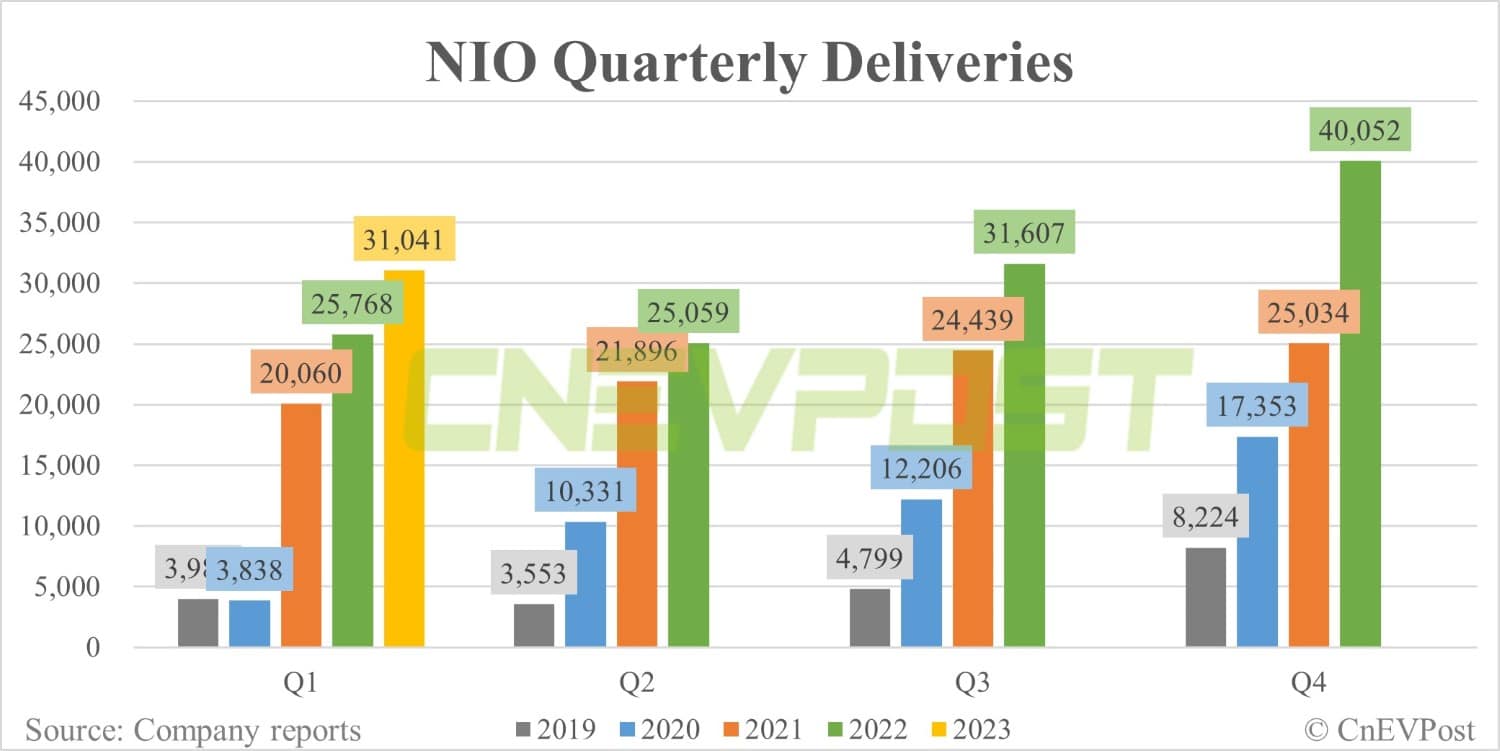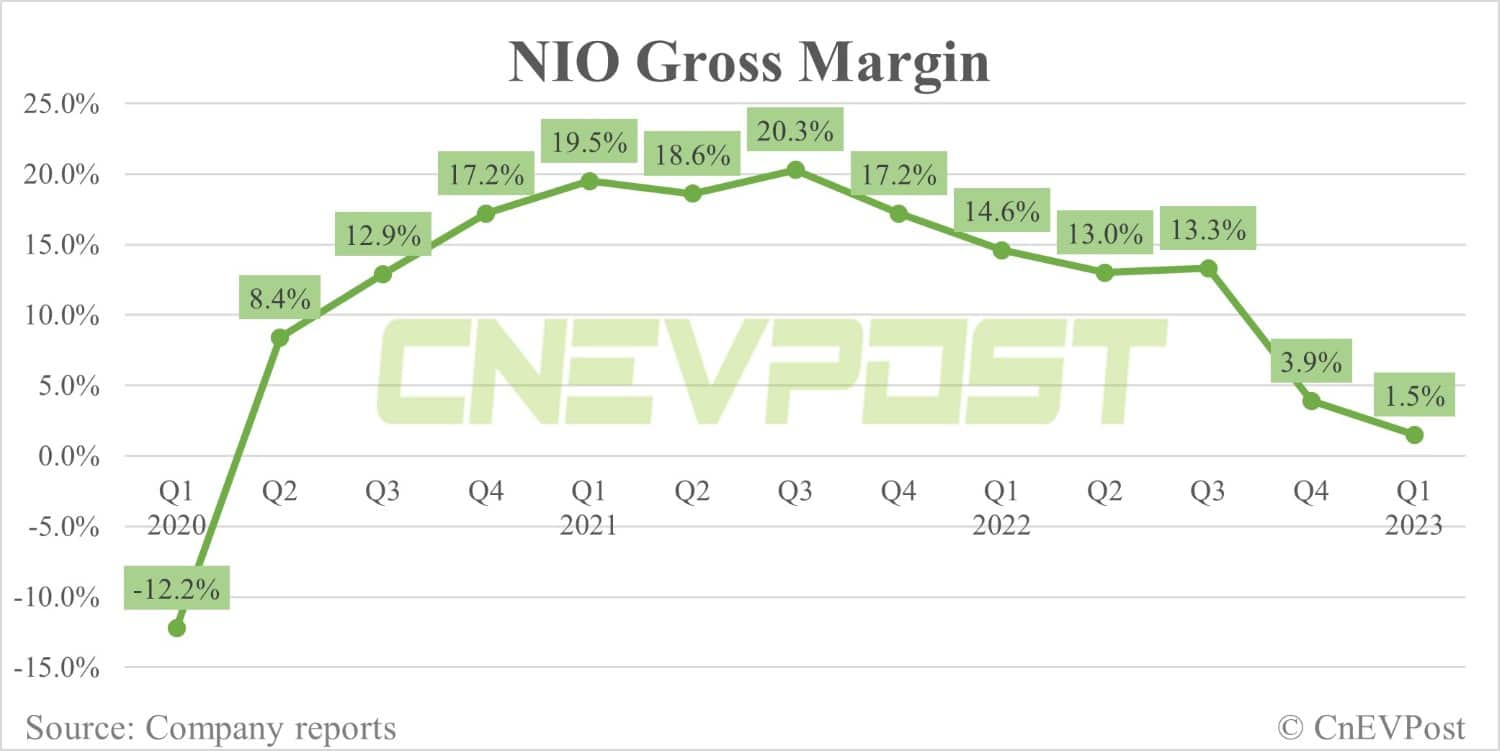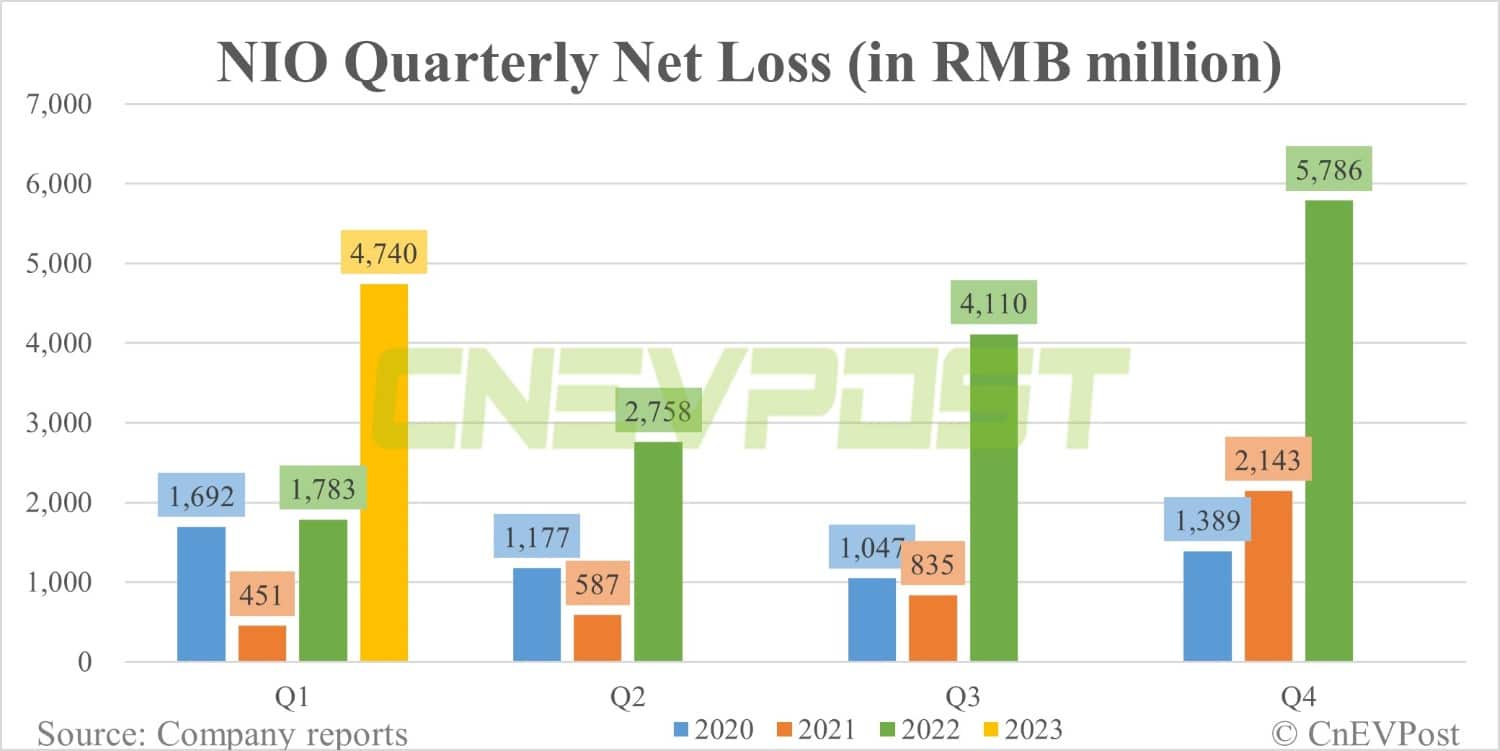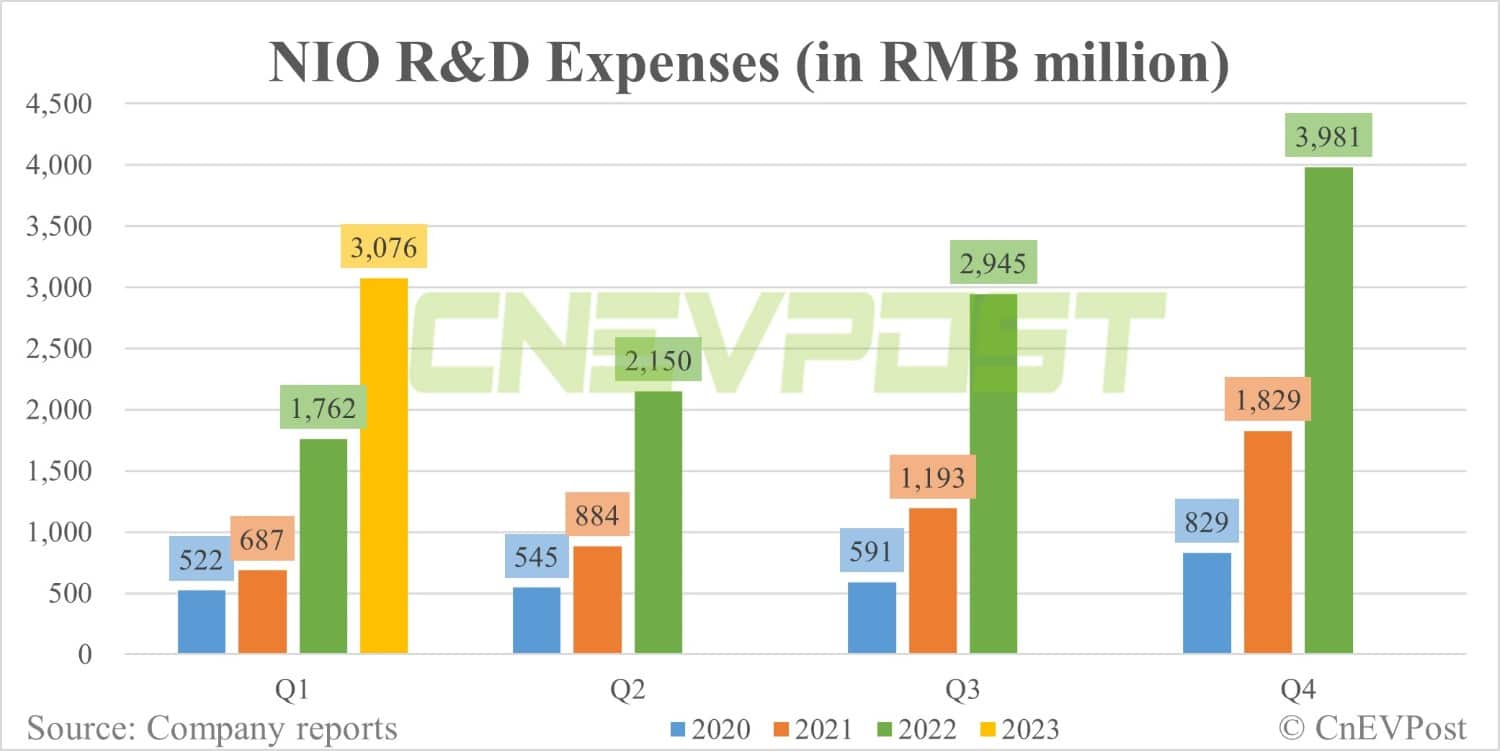Nio guided for second quarter vehicle deliveries to be between 23,000 and 25,000 units, meaning it expects June deliveries to be in the range of 10,187-12,187 units.
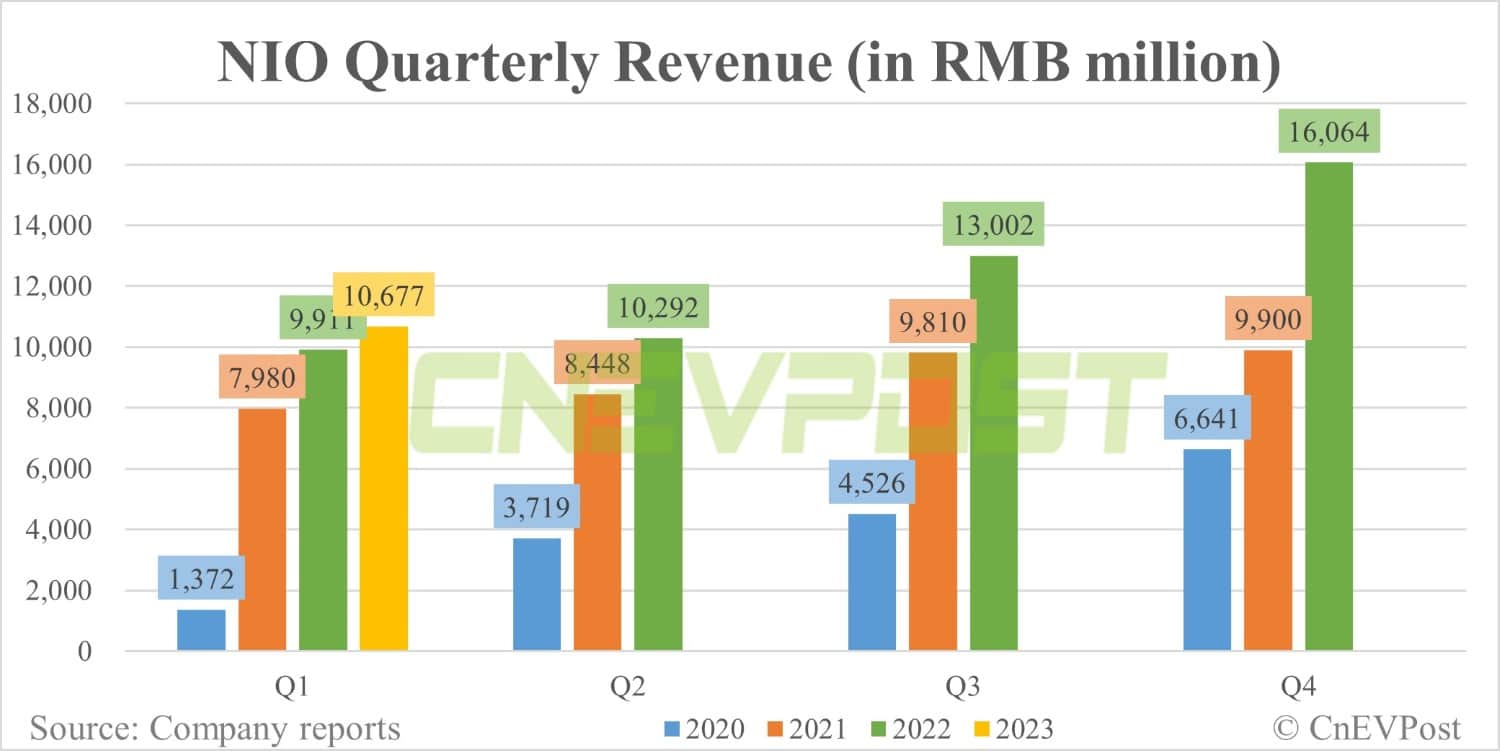
Nio (NYSE: NIO) reported weaker-than-expected first-quarter results, with gross margin falling to just 1.5 percent due to promotional activities.
The electric vehicle (EV) maker reported revenue of RMB 10.68 billion ($1.55 billion) in the first quarter, below Wall Street analysts' expectations of RMB 12.275 billion and below the lower end of its previous guidance range of RMB 10.93 billion to RMB 11.54 billion.
That's up 7.7 percent year-on-year but down 33.5 percent from the fourth quarter of 2022, according to unaudited financial reports released today.
Previous data showed that Nio delivered 31,041 vehicles in the first quarter, slightly above the lower end of the guidance range of 31,000 to 33,000 vehicles.
It reported vehicle sales of RMB 9.22 billion in the first quarter, down 0.2 percent year-on-year and down 37.5 percent from the fourth quarter of 2022.
The decrease in vehicle sales compared to the first quarter of 2022 was primarily due to a higher percentage of deliveries of ET5 and 75 kWh standard range battery packs, resulting in lower average sales prices, partially offset by higher deliveries, Nio said.
The decrease in vehicle sales compared to the fourth quarter of 2022 was primarily due to lower deliveries and a lower average selling price due to a higher percentage of ET5 and 75 kWh standard battery pack deliveries, it said.
Nio's cost of sales in the first quarter was RMB 10.51 billion, an increase of 24.2 percent year-on-year and a decrease of 31.9 percent from the fourth quarter of 2022.
The year-on-year increase was primarily due to higher deliveries and higher costs from selling accessories, providing repair and maintenance services, selling used vehicles and providing power solutions, which were related to increased vehicle sales and expansion of the power and service network.
The decrease in cost of sales compared to the fourth quarter was primarily due to lower deliveries, an increase in the percentage of ET5 and 75 kWh standard battery packs delivered, lower average material costs per vehicle, and the loss of inventory provisioning, accelerated depreciation of production facilities and purchase commitments related to the previous generation ES8, ES6 and EC6 in the fourth quarter.
Nio's gross margin was 1.5 percent in the first quarter, compared to 14.6 percent in the same period last year and 3.9 percent in the fourth quarter of 2022.
It reported a vehicle margin of 5.1 percent in the first quarter, compared to 18.1 percent in the same quarter last year and 6.8 percent in the fourth quarter.
The decrease in vehicle margin compared to the first quarter of 2022 was primarily due to changes in product mix and an increase in cost per unit of battery, Nio said.
The decrease in vehicle margin compared to the fourth quarter was primarily due to changes in product mix and increased promotional discounts on the previous generation ES8, ES6 and EC6, which were partially offset by inventory provisions in the fourth quarter of 2022, accelerated depreciation of manufacturing facilities and loss of purchase commitments on the previous generation ES8, ES6 and EC6, it said.
Nio reported a net loss of RMB 4.74 billion in the first quarter, up 165.9 percent year-on-year and 18.1 percent lower than in the fourth quarter of 2022.
Excluding stock-based compensation expense, non-GAAP adjusted net loss for the first quarter was RMB 4.15 billion, up 216.9 percent year-on-year and down 18.1 percent from the fourth quarter of 2022.
It reported both basic and diluted net loss per common share/ADS of RMB 2.91 in the first quarter, compared to RMB 1.12 in the first quarter of 2022 and RMB 3.55 in the fourth quarter of 2022.
Excluding share-based compensation expense and incremental redemption value of redeemable noncontrolling interests, non-GAAP adjusted basic and diluted net loss per share/ADS were both RMB 2.51, compared to RMB 0.79 in the same period last year and RMB 3.07 in the fourth quarter.
The company reported R&D expenses of RMB 3.08 billion in the first quarter, an increase of 74.6 percent year-on-year and a decrease of 22.7 percent from the fourth quarter.
Excluding share-based compensation expense, non-GAAP R&D expenses were RMB 2.71 billion, an increase of 79.1 percent year-on-year and a decrease of 23.7 percent from the fourth quarter.
The increase in R&D expenses compared to the first quarter of 2022 was primarily due to higher personnel costs in the R&D function and higher share-based compensation expense recognized in the first quarter of 2023. The decrease in research and development expenses compared to the fourth quarter reflects fluctuations due to the different design and development phases of new products and technologies, Nio said.
As of March 31, Nio's cash and cash equivalents, restricted cash, short-term investments and long-term time deposits had a balance of RMB 37.8 billion.
Nio guided that second-quarter vehicle deliveries would be in the range of 23,000 to 25,000 units, down about 8.2 percent to 0.2 percent from the same quarter in 2022.
The company expects total revenue for the second quarter to be between RMB 8.742 billion and RMB 9.37 billion, a decrease of about 15.1 percent to 9.0 percent from the same quarter of 2022.
Considering that it delivered 6,658 vehicles in April and 6,155 vehicles in May, the guidance implies that Nio expects June deliveries to be in the range of 10,187-12,187 vehicles.
Nio launched the new ES6 on May 24, but it still seems to be in the capacity creep phase.
Nio launched the new ES6 on May 24, though it is still in the capacity creep phase and thus contributes little to sales.
"With exquisite design, high performance, superior comfort, and advanced digital systems, the All-New ES6 has received overwhelmingly positive feedback from our users," said William Li, founder, chairman and CEO of Nio.
"With the volume ramp-up of our new models including the All-New ES6, our teams are well prepared for a solid growth in vehicle deliveries," Li added.

